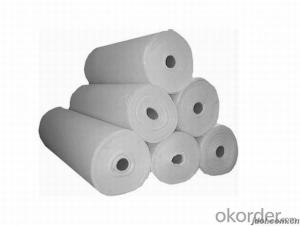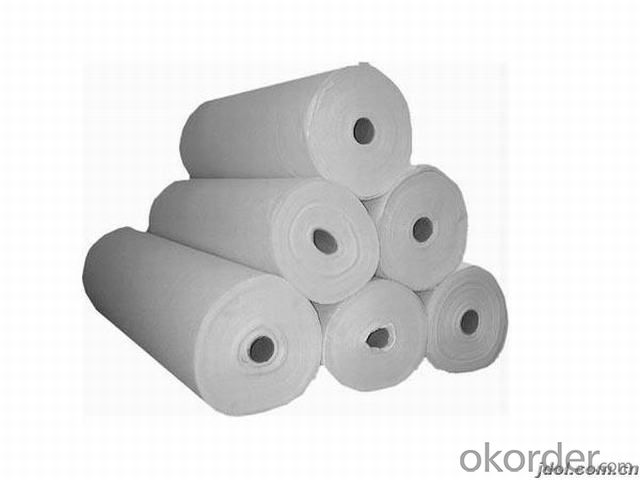Polypropylene Woven Geotextiles Technical Data Sheet of PET Staple Fiber Needle Punched Nonwoven Geotextile for Soil Retainer
- Loading Port:
- Qingdao
- Payment Terms:
- TT OR LC
- Min Order Qty:
- 20000 m²
- Supply Capability:
- 1500000 m²/month
OKorder Service Pledge
OKorder Financial Service
You Might Also Like
Specifications of PET Staple Fiber Needle Punched Nonwoven Geotextile for Soil Retainer:
· It is produced by spinning, needle punching process with super-strength polyester chip, so that the total carrying capacity is further raised.
· It can keep primary characteristic for more long time, not liable to deform and break down.
· It shows great characteristics at cid and alkali resistance, insect resistance and anti-mycotic.
· Good water permeability.
· Withstand High temperature and freezing, and is able to adapt to the different outer environment.
· Light in weight, and can be packed as buyer require. So it is convenient to transport , storage and construct.
Technical Data Sheet of PET Staple Fiber Needle Punched Nonwoven Geotextile for Soil Retainer:
Main Technical Index | ||||||||||||
Item | Unit | Index | ||||||||||
Weight of Unit Area | g/m2 | 100 | 150 | 200 | 250 | 300 | 350 | 400 | 500 | 600 | 800 | |
Break Strength | Vertical | kN/m≥ | 2.8 | 4.7 | 6.7 | 8.2 | 9.8 | 11.3 | 12.8 | 16.4 | 19.5 | 25.8 |
Cross | kN/m≥ | 3.0 | 5.2 | 8.0 | 9.8 | 11.7 | 13.6 | 15.4 | 19.7 | 23.4 | 31.2 | |
Break Elongation | Vertical | % | 91 | 89 | 88 | 85 | 75 | 60 | 65 | 59 | 61 | 59 |
Cross | % | 87 | 84 | 82 | 79 | 82 | 71 | 59 | 58 | 65 | 62 | |
CBR Bursting Strength | kN≥ | 0.5 | 0.7 | 1.1 | 1.3 | 1.7 | 2.0 | 2.3 | 2.9 | 3.5 | 4.4 | |
Equivalent Aperture 095 | mm | 0.15 | 0.14 | 0.13 | 0.12 | 0.11 | 0.10 | 0.09 | 0.08 | 0.07 | 0.07 | |
Vertical Coefficient | Cm/s | (6-0.2)*10-1 | ||||||||||
- Q: What is the expected lifespan of geotextiles?
- The expected lifespan of geotextiles can vary depending on various factors such as the quality of the material, the specific application it is used for, and the environment it is exposed to. However, on average, geotextiles are designed to have a lifespan ranging from 10 to 30 years.
- Q: How are geotextiles made?
- Geotextiles are made by weaving or knitting synthetic fibers together to create a strong, durable fabric that can be used for various geotechnical applications.
- Q: What are the specifications for geotextiles used in transportation projects?
- The specifications for geotextiles used in transportation projects typically include factors such as tensile strength, puncture resistance, permeability, and durability. These specifications ensure that the geotextiles can effectively separate, reinforce, filter, or drain soil materials in transportation applications, thereby enhancing the overall performance and longevity of the projects.
- Q: How do geotextiles help in preventing soil contamination?
- Geotextiles help prevent soil contamination by acting as a barrier between the soil and potentially harmful substances. They can prevent the infiltration of pollutants such as chemicals, oils, or waste materials into the soil, thereby protecting the soil quality and preventing contamination. Additionally, geotextiles can also help in stabilizing soil erosion, reducing sediment runoff, and enhancing filtration, thus further preventing soil contamination.
- Q: What is the latest offer for geotextile prices?
- Geotextile Product Description: Geotextile is made of polypropylene, acrylic yarn as raw material woven by the geosynthetics, widely used in water conservancy, electricity, harbors, highways, railway construction and other geotechnical engineering. Geotextiles Category: Geotextiles a wide range of ordinary geotextile refers to the permeable geotextile, also known as short wire geotextile, polyester geotextile other filament geotextile, waterproof geotextile and so on. Geotextile Price Description: There are many manufacturers of geotextiles across the country, the product offers different prices affected by the impact of raw materials and regional differences, a good product should be a penny goods. The price according to product specifications offer direct contact consultation 182 power 6686 words 2233 to find professional manufacturers to understand, product prices dynamic. Hope to help you
- Q: How do geotextiles help with asphalt pavement reinforcement?
- Geotextiles help with asphalt pavement reinforcement by providing additional strength, stability, and durability to the pavement structure. They are placed between the asphalt layers to prevent the mixing of subgrade soil and base material, reducing the potential for pavement distress and rutting. Geotextiles also act as a separation barrier, preventing the intrusion of fines and water into the pavement layers, which can weaken the structure over time. Additionally, they distribute the load more evenly, improving the pavement's ability to withstand traffic loads and reducing the occurrence of cracks and potholes.
- Q: Cement concrete bridge is a film curing or geotextile maintenance
- Commodity concrete pouring is completed, should be in the slurry after grinding as soon as possible to cover and sprinkler conservation. Commodity concrete bridge deck with full coverage of sprinkler conservation methods, covering materials with two sticky one geotextile, every 1t sprinkler once, to ensure the quality of conservation, to prevent cracks.
- Q: Will geotextiles generally use where?
- Water conservancy project dam and slope protection of the filter, channel isolation, anti - seepage. ⒉ road, railway, airport runway foundation isolation, filter, drainage, soil slope, retaining wall and road reinforcement, drainage. ⒊ port engineering soft foundation treatment, beach embankment, harbor wharf and breakwater reinforcement, drainage. ⒋ landfill, thermal power plant ash dam, mine tailings dam isolation, seepage control.
- Q: What are the physical properties of geotextiles?
- Geotextiles are engineered fabrics with diverse physical properties. They are typically lightweight, flexible, and permeable. Geotextiles can have varying levels of tensile strength, puncture resistance, and abrasion resistance depending on their intended application. They can be woven or non-woven, with the latter being more commonly used in geotechnical applications. Additionally, geotextiles exhibit good resistance to UV degradation, chemicals, and biological degradation.
- Q: How do geotextiles help in reducing the impact of heavy rainfall on soil?
- Geotextiles help in reducing the impact of heavy rainfall on soil by acting as a protective barrier. They allow water to pass through while preventing soil erosion and retaining soil particles in place. This prevents the loss of valuable topsoil, which helps to maintain soil fertility and structure. Additionally, geotextiles aid in promoting water infiltration and drainage, reducing the risk of waterlogging and surface runoff, which can cause floods or soil erosion.
Send your message to us
Polypropylene Woven Geotextiles Technical Data Sheet of PET Staple Fiber Needle Punched Nonwoven Geotextile for Soil Retainer
- Loading Port:
- Qingdao
- Payment Terms:
- TT OR LC
- Min Order Qty:
- 20000 m²
- Supply Capability:
- 1500000 m²/month
OKorder Service Pledge
OKorder Financial Service
Similar products
Hot products
Hot Searches
Related keywords






























